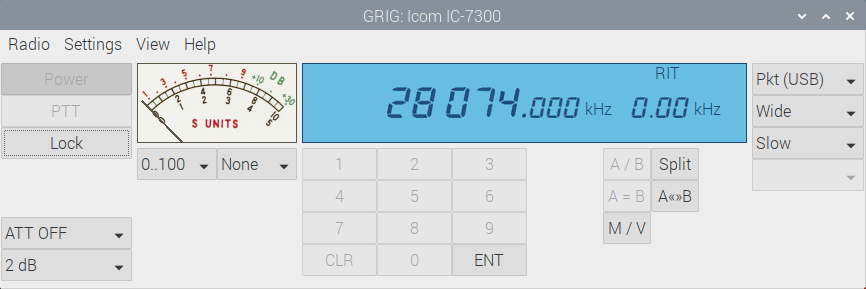
Grig is a simple graphical user interface (GUI) for controlling radios using the Hamlib radio control library. It provides an easy way to interact with supported transceivers via a computer, allowing users to adjust frequency, mode, and other settings.
Key Features of Grig:
•Supports Hamlib, which enables control of many different radios.
•Provides a lightweight and easy-to-use GUI.
•Allows basic rig control functions such as frequency tuning, mode selection, and PTT (Push-to-Talk) control.
Use Cases:
•Digital Modes: Works with software like RigPi FLDigi and WSJT-X.
•Remote Operation: Control your transceiver from a different location.
•Automation & Logging: Helps integrate with logging software for contesting or general QSO logging.
You can start Grig from the Raspberry Pi Run menu with optional parameters to customize its behavior. Here are the key parameters:
Basic Usage:
grig [options]
Common Parameters:
Option |
Description |
-m <model> |
Sets the radio model number (as defined in Hamlib). |
-r <device> |
Specifies the serial port or IP address (e.g., /dev/ttyUSB0 or 192.168.1.100). |
-s <baud> |
Sets the serial baud rate (e.g., 9600, 115200). |
-c <id> |
Specifies the radio configuration string. |
-d |
Enables debug output. |
-h |
Displays help information. |
Example Commands:
1.Start Grig with an Icom IC-7300 connected via USB:
grig -m 3073 -r /dev/ttyUSB0
2.Enable debugging output:
grig -d